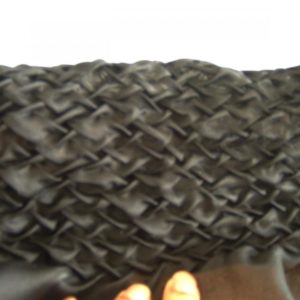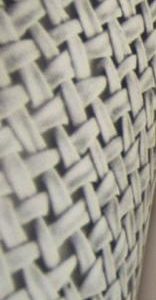Hi, I need your help. I’m new to smocking and I decided to do the lattice stitch. I got the directions out of The Art of Manipulating Fabric book and other websites as well. I feel like I followed the diagram to a T and my end result doesn’t look like what a lattice smocking should look like.
Also, I’d like to do this technique on several pattern pieces, not big, just small pieces.
Can you please critique my smocking and tell me what step am I missing that doesn’t take me to the result that i want (which will be the second picture from the book). Also, can someone enlighten me as to how I can adapt a pattern piece to accommodate this technique?
First pic, my sample. second, what i want to achieve.
I really appreciate all your help.


























Replies
I am NOT an expert on smocking..... but it looks like you may be using a very different type of cloth than the book's sample. Your piece does have a lattice-like look about it, but maybe it is thinner and more loosely woven that the cloth they chose for the sample, which looks crisp and tightly woven.Just my best guess,
Becky
i also know very little about smocking, BUT, it looks like your smocking was done looser than the sample. and also, i agree that it might be the fabric as well. good luck and keep on trying.
p.s. i have found that even after 3 years of sewing lessons, most of what i have learned about sewing came from trial and error.
I don't think I did it looser, according to the directions and diagram, You have to join the dots together and form a knot before you move on to the next stitch. I think it might have to do with arranging the pleats and pressing them in place.
Yours is beautiful; I prefer it to the "goal" piece!
However, it looks as if the second piece has been pulled from end to end quite snugly, perhaps after being dampened and stretched to dry. And I agree that your fabric looks like a soft, silky type rather than the crisp cotton of the sample.
Most smocking is used in rectangles in one area of a finished garment. If you measured the size of your original rectangle of fabric and measure the finished one, you will get a proportion that you can then use to create the size you need. (Maybe it's 60% narrower and 40% shorter, so you cut the original large enough to account for that reduction in the final piece.)
When my mother smocked, she always cut the original piece a few inches wider than she thought she would need and then worked to the correct size, constantly comparing it to the flat pattern piece. As soon as she was close to the correct size, she knotted each stitch so that she could clip the piece without loosing a large area. I still can't believe she did all that with six or seven little ones running about!
My fabric is going to be a slightly stiff sheer organza, so the lattice pattern is used to cut down on the sheerness. What do you mean, by end to end? Are you talking about the entire piece across each row? The diagram for this pattern has me doing this down the length instead of across on the width. Maybe I should switch up?
You should send your message to Solosmocker (our resident smocking expert in this Gatherings group :)). We haven't heard from her in awhile. If you look in the archives back to last summer or fall, she had beautiful samples of her smocking on baby clothes, as well as the lattice pattern, so check there first. If that doesn't help, Solosmocker will certainly know the answers.
Gloria
If it doesn't hurt the piece, it's certainly worth a try.
Since I'm dyslexic, I often follow directions exactly--opposite--and things turn out fine, except sideways or reversed. Surprisingly, it often doesn't matter much, and sometimes I like the results better anyway.
This smocking pattern reminds me of the Tumbling Blocks Quilt pattern, which appears 3-D when viewed from one side but completely flat from the next. A 90-degree turn sometimes makes all the difference!
Wow , I'm impressed. It looks very nice all the same.
My word! I just looked at those directions in The Art of Manipulating Fabric, and I don't think I could have followed them. They were very confusing to me. You did a wonderful job. As it happens, the June/July issue of Sew News also has instructions in Linda Lee's column for that exact same smocking pattern. Frankly it was much easier for my lame brain to follow. That said, the end product, which appears to be a rather soft velvet, is not nearly as perfect as the medium weight muslin used in the aforementioned book. Good luck.
Thanks for the kind words, I'm attempting another sample in the opposite direction, going horizontal instead of vertical. Yes, the instructions are hard and leave you empty-handed in the mentioned book, even though it has tons of examples. I wish the author taken the time to focus on the directions vs. her examples, most of which don't have directions at all.
educo, I just stumbled on this website that you might find interesting if you are still dissatisfied with your lattice pattern smocking project. I thought of you immediately when I saw it.
http://www.savvyseams.com/techniques/canadian.php
JunkQueen,
Thanks for that link, what a great tutorialJudy
You are most welcome.
This post is archived.